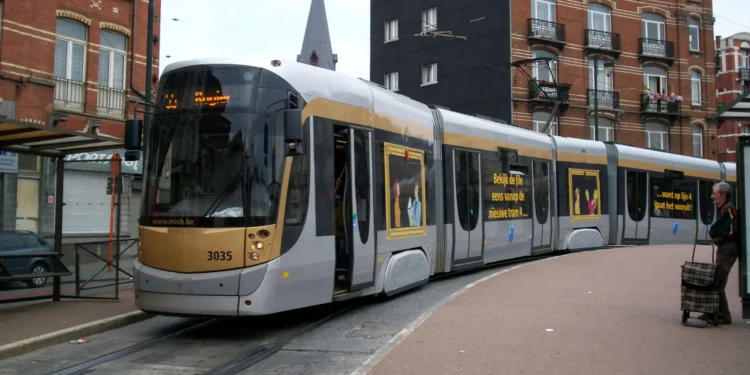Brussels (Brussels Morning) – A new Brussels tram line is on its way, as Brussels Mobility and public transport carrier STIB are applying for urban development access for the structure of tram line 15 to connect Belgica with the North Station.
Which areas will the new tram line initially connect?
The new tram line in Brussels will connect the Belgica stop in the municipality of Molenbeek-Saint-Jean to Brussels North station, and at a subsequent stage, it will be extended to the Central station in the city centre. As the domain of the construction of the line, the public space along the route will be completely redesigned.
“This new tram line will link the Maritime District with the North Station. From there, the tram will continue to Central Station,” stated Brussels Minister for Mobility and Public Works, Elke Van den Brandt. “This project will also improve the Maritime District because Rue Picard will have trees and wide pavements. This will make Parc Maximilien and the Maritime and Northern Districts greener and more liveable,” she added.
How will the construction of the new tram line impact public spaces?
As part of the structure of the new tram line, the public space will be completely redesigned, distributing the area more evenly among pedestrians, cyclists, public transport and car and freight traffic. It will also develop more space for water infiltration, rest spaces, and play and green elements.
“With this redesign, we are forming a connection between the Maritime District and Tour & Taxis. People can then reach the North Station more easily from here,” Van den Brandt said. “We are supporting the bond with the canal and creating a real meeting place here, which young and old alike can enjoy.”
How will the new tram line enhance connectivity to the North Station?
In the first phase, tram line 15 will join Belgica with the North station. “Following on from the Neder-Over-Heembeek tram, this line is the next extension. STIB is resuming its efforts to further expand the network, for bus, tram and metro lines, thereby contributing to the regional mobility policy.” Five Brussels municipalities cooperated to create the tram line, along with public services such as Urban, STIB and Bouwmeester maître architecture (BMA).
At Belgica metro station, the roundabout on Place Werrie will drive way for terraces and green space, as traffic stats have shown that a roundabout is disproportionate; the main traffic flows run via Boulevard Belgica and Avenue Woeste. This axis will also remain available from Avenue Carton de Wiart, which will be developed in such a way that traffic becomes more unassailable and the infrastructure invites people to drive at an adapted speed.
How will the construction of the tram line affect Rue Vanderstichelen and Rue Picard?
As part of the construction of the tram line, the public area on Rue Vanderstichelen and Rue Picard will also be fully redesigned, creating more space for pedestrians, cyclists and public transport, while preserving access for motorists. The tram will traverse the canal via the Suzan Daniel Bridge (which was partly designed for this purpose), and Boulevard Simon Bolivar will be converted into a green boulevard with good access for pedestrians and people with decreased mobility.
The provisional terminus for passengers utilising tram line 15 is located on Place Bolivar, with a technical terminus near the corner in Rue des Charbonniers. Numerous trees and shrubs will be grown along the entire route and there will be lane furniture and benches for pedestrians to relax on.




